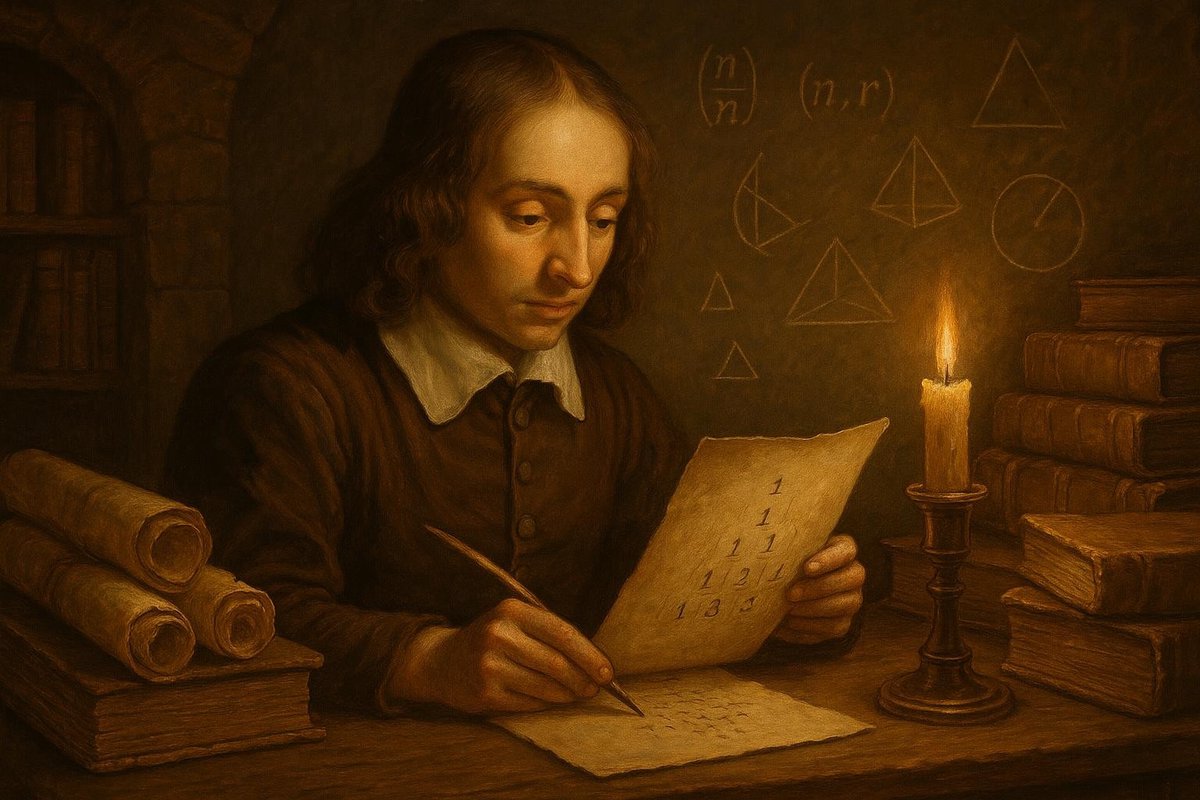
Unveiling a Mathematical Marvel: The Simple Question at Pascal’s Heart
Imagine a time in the halls of academia when the answers to great questions were often found by candlelight, where humble scribes would labor over puzzling problems. One such conundrum was deceptively simple: How many ways can you select a certain number of items from a larger set? This is the kind of question that tickles the curious mind. Interestingly, it was this very puzzle that laid the foundation for what we now call Pascal’s Triangle.
Before this triangle was etched into textbooks, mathematicians were already tinkering with ideas of combinations and permutations. Yet, they lacked a systematic approach, something like a magic key to unlock the realm of combinatorics. Many people believe that the triangle is solely Pascal’s creation, but the truth is, its origins stretch far beyond the French mathematician himself. Dive with me into a story of discovery that spans centuries, cultures, and minds.
The Origin of Pascal’s Triangle: A Panoramic View
Long before Blaise Pascal put his name to this triangular masterpiece, mathematicians in China and Persia were already exploring similar patterns. Around 1100 AD, the Chinese mathematician Jia Xian devised a method for calculating binomial coefficients, which is an early form of what would become Pascal’s Triangle.
- Jia Xian’s work became a precursor to the triangle’s development.
- In Persia, mathematicians like Al-Karaji were leveraging these principles for algebraic expansions.
- The triangle appeared in Islamic mathematics under different names and forms.
As time went on, these ideas percolated through the academic world, shifting and transforming as they moved from East to West. This foundational concept was more than just a curious artifact of number crunching; it was a bridge linking the mathematical prowess of vastly different cultures. No wonder it became a cornerstone of combinatorial mathematics.
Key Figures in the Triangle’s Evolution
Our journey must pay homage to Blaise Pascal, a French polymath whose 1654 treatise elevated this numerical strategy into mainstream consciousness. Pascal didn’t discover the triangle, but his work in probability theory and his contributions to its application brought the triangle into the spotlight.
- Blaise Pascal advanced the use of the triangle in probability.
- His work sparked wider European interest in combinatorics.
- Pascal’s contemporary, Pierre de Fermat, collaborated on probability problems.
By delving into the mathematical intricacies that underpinned gambling games, Pascal and Fermat laid the groundwork for modern probability theory. It was Pascal’s ability to synthesize these ancient ideas with contemporary ones that sparked a mathematical renaissance. Of course, this collaboration was as much a social phenomenon as an intellectual one, marking a pivotal moment in mathematical history.
A Turning Point: From Curiosity to Cornerstone
The transformation of Pascal’s Triangle from an intellectual curiosity into a mathematical cornerstone was not immediate, but it was inevitable. As the Enlightenment took hold across Europe, the triangle’s application in binomial expansions and probability became essential to the burgeoning field of statistics.
- The triangle simplified complex calculations in probability and algebra.
- It became a powerful tool in Newton’s work on binomial theorem.
- Scholars used it to describe natural phenomena and predict outcomes.
As the Industrial Revolution dawned, mathematical prowess became indispensable. Pascal’s Triangle offered a way to simplify the complexity of the world, enabling engineers and scientists to predict outcomes with greater accuracy. Like a lighthouse guiding ships to shore, this mathematical marvel illuminated the unknowns of the natural world.
The Triangle’s Lasting Impact on the World
Today, Pascal’s Triangle is more than a historical artifact; it’s a living tool that informs everything from architecture to computer science. Its elegant simplicity belies its profound utility in solving modern problems. Mathematicians, educators, and students alike continue to marvel at its versatility.
- It is foundational in teaching combinatorics and probability.
- The triangle finds applications in algorithm design and coding theory.
- It’s a symbol of the interconnectedness of global mathematical thought.
Perhaps the most remarkable aspect of Pascal’s Triangle is its ability to inspire. It offers a window into the shared human endeavor of understanding the universe through numbers. As new generations of mathematicians arise, the triangle remains a testament to the power of curiosity and collaboration.
The legacy of Pascal’s Triangle is a reminder of what can be achieved when we allow ourselves to be guided by wonder and inquiry. This simple question has blossomed into a complex web of knowledge that continues to influence the world profoundly.
Fuel Someone Else’s Curiosity
Thank you for joining me on this mathematical journey. If you found this exploration as fascinating as I did, consider sharing this article with others who might be curious about the world’s mathematical wonders. Let’s keep the flame of discovery burning bright, encouraging others to explore the elegant tapestry of ideas that shape our understanding of the universe.

Leave a Reply